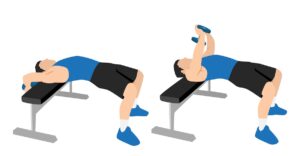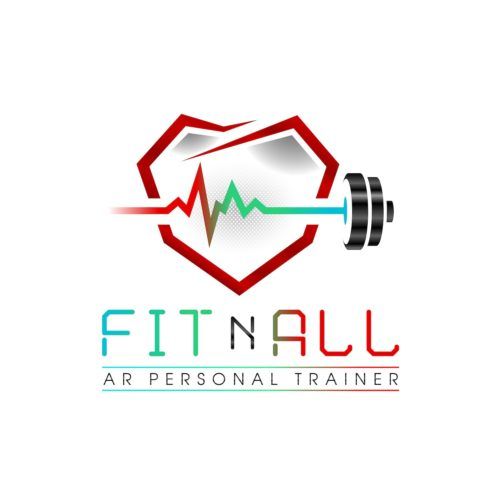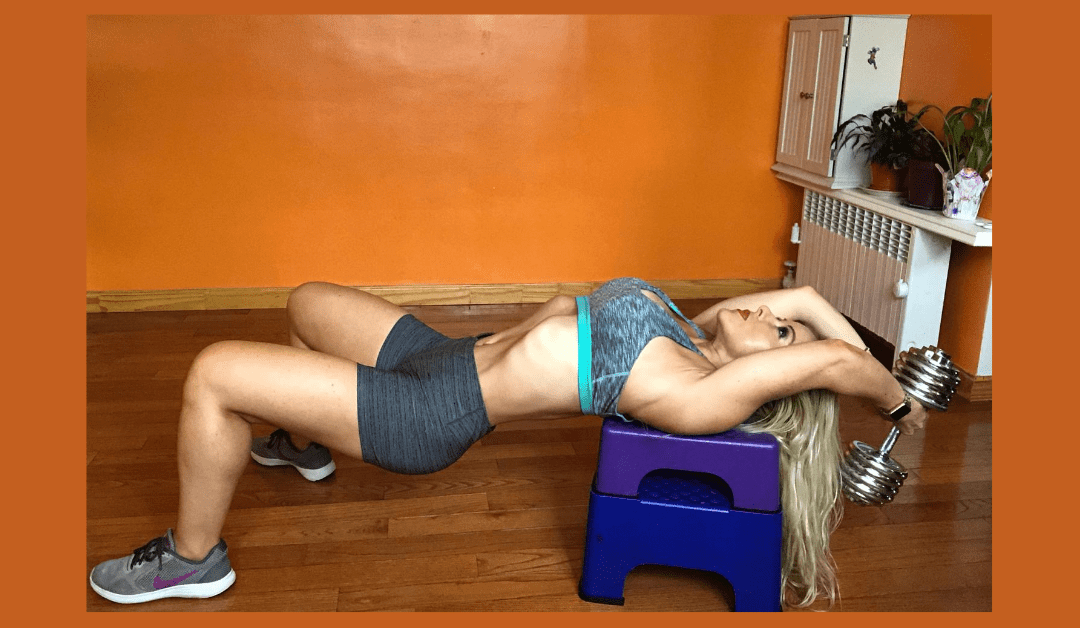Having strong and well-developed back muscles is an asset in many areas, and the same goes for the pectoral muscles. There is a great exercise that works the anterior as well as posterior areas of the upper body, in other words, the chest and back. The dumbbell pullover is a chest exercise as well as a back exercise.
Below we’ll look deeper into dumbbell pullovers and cover the following topics:
- Muscles involved in dumbbell pullovers
- Benefits associated with dumbbell pullovers
- How to properly do dumbbell pullovers
- Common mistakes when performing dumbbell pullovers
- Upper body exercises to complete your chest and back workout
- Video on how to do dumbbell pullovers
Having a strong chest and back is extremely important. Strong pectorals contribute to your overall upper body strength. They are also involved in flapping, pressing, lifting, throwing, and swinging actions. A strong well-developed chest improves your ability to push things and helps you to stand tall and have good posture. Simultaneously, it adds size to the chest wall and lifts the chest. However, overtraining your chest without training your back can leave you slouched forward.
The back is an extremely important part of the body but many people neglect it. The back is connected to the hips and gluteal muscles at the bottom, to the neck at the top, and to the anterior area of the body through the chest and shoulders. It empowers your body and contributes to basic human movement dynamics.
Strengthening your back muscles is not a luxury. It is a necessity, not only to keep a healthy back but a healthy body. Back muscles help keep the joints of the spine free from restriction. Strong back muscles help you to develop and maintain correct posture. This is significant since improper posture leads to back pain over time. Strengthening your back muscles positively affects your daily living.
Additionally, having a strong back assists you in developing and strengthening other muscles. This translates into increased power for a great variety of movements, such as in ab and chest workouts and exercises for the lower posterior chain. In regards to aesthetics, developing and strengthening your back helps to give you a V-shape, which shows a slimmer-looking waistline.
What Muscles Do Dumbbell Pullovers Work?
The classic dumbbell pullover is a widely used resistance exercise that primarily strengthens the muscles in the chest (pectoralis major) and the large wing-shaped muscles in the back (latissimus dorsi). Let’s delve into the muscles involved in dumbbell pullovers.
Primary Muscles:
- Chest Muscles: These are the pectorals, which are divided into the pectoralis major and pectoralis minor. The pectoralis major is the larger one, a fan-shaped muscle comprising most of the chest wall. It keeps your arms attached to your body and it’s involved in flapping, pressing, and lifting movements. The pectoralis minor is smaller and flatter. This one lies underneath the pectoralis major and is involved in shoulder functioning.
- Back Muscles: The main back muscles involved in the movement are the lats. The lats (latissimus dorsi) are the largest muscles in the back that start under the tail end of the trapezius and go all the way down to the sacrum, and out onto the posterior iliac crest. It also has some fibers arising from the lower four ribs, and occasionally from the tip of the scapula. The lats extend, adduct and medially rotate the humerus and depress the scapula.
Secondary Muscles:
- Core Muscles: The erector spinae and the abdominal muscles are involved in dumbbell pullovers. The erector spinae is a set of muscles that run vertically along the side of the vertebral column, originating at the hip and extending up to the skull. These muscles help rotate and extend the spine and neck. The abs are the muscles in the abdominal wall – rectus abdominis, obliques, transverse abdominal make up the core muscles.
- Triceps Brachii: These are the muscles on the back of the arm that have 3 heads (long, lateral, and medial head) and are the chief extensors of the forearm.
- The Rhomboids: These are the muscles located in the upper back in between the scapula. They support and draw the scapula superomedially, and rotate the glenoid cavity.
- The Serratus Anterior: These muscles are located on the upper 8 or 9 ribs at the side of the chest. They help rotate and draw the scapula forward and upward, and stabilize the vertebral border of the scapula.
By making variations to the dumbbell pullover, you can engage the muscles differently. Depending on how you grab the weight and keep your arms will determine the muscle that you’ll be hitting more intensely. For instance, keeping the arms as straight as possible concentrates more on the chest while bending the elbows out targets more of the back muscles.
Benefits of Dumbbell Pullovers
- Aesthetics: Dumbbell pullovers work your chest and back, giving you that nice V-look.
- Hypertrophy: They help you increase muscle mass in the chest and back area.
- Increased Flexibility: Dumbbell pullovers not only help you build muscle but give your upper body a big stretch. This increases the range of motion of your shoulder joint and expands the chest, making your upper body more flexible.
- Efficiency: This exercise trains the frontal and posterior areas of the body at the same time.
- Cardiovascular and Pulmonary Health: Dumbbell pullovers, like other resistance training exercises, improve lung capacity and airway flow while working on your heart and circulation.
- Posture: Strengthening your chest, back, and core muscles helps improve postural stability.
- Core Strength: Dumbbell pullovers engage your core muscles, helping improve stability and strength in the core area.
- No Machines Necessary: You don’t need access to a gym or tons of equipment. All you need is a dumbbell and a bench. But a bench is not mandatory, you can use a stepper, a stability ball, or just a mat on the floor.
How to Do Dumbbell Pullovers

- Sit on the narrow end of a bench
- Plant your feet on the floor slightly wider than hip-width
- Roll down and rest your back, neck, and head on the bench
- If you are using a small stepper (as I’m doing on the video) or stability ball, plant your feet on the floor and rest your back, neck, and head fully supported while keeping your hips stable
- Grab a dumbbell between your hands. Place your hands in a diagonal-like ◆ position with your palms facing each other
- Extend your arms toward the ceiling, over your chest, and keep the elbows slightly bent
- Tighten up your core, inhale, and slowly extend the weight back and over your head until you reach a fully extended position where the dumbbell is behind your head – but not below your head.
- Upon fully extending your arms back, exhale slowly and bring your arms up to the starting position over your chest
- Repeat
Remember, if you want to target more of the chest area, keep your arms as straight as possible (but don’t lock the elbows). If you want to concentrate more on the back, bend the elbows out a little bit more.
Dumbbell Pullovers Mistakes
- Not engaging the core: Keeping your core tight protects your back, prevents injury, and gives you more control over the weight.
- Moving the weight unevenly: If one side of your body is stronger or more flexible than the other, you may see one arm extending further over your head or bringing the weight up faster than the other. So, you should be mindful of this and move both arms simultaneously.
- Improper support: Make sure that your upper back, neck, and head are fully supported when you lay back so you don’t strain your neck.
- Too much weight: Using a very heavy dumbbell can make you lose control over the weight. This mistake may not allow you to maintain proper alignment or to complete the exercise with the full range of motion. It can strain your wrists too.
- Moving Too Fast: This is an exercise to be performed in a controlled fashion – It’s not about speed.
- Rotating or flexing the wrists: Your palms should face each other throughout the whole exercise and your wrists strong. If your wrists flop – your palms start to face up instead of each other – you need to decrease the weight. This will allow you to maintain alignment through the lower arm.
Dumbbell Pullover Video
In the video, I’m targeting the chest more than the back, which is why my arms are more straight.
Chest and Back Workout
If you want to target your chest, you can complete your workout with
If you want to target your back, you can complement your back workout with
As you can see the dumbbell pullover is a wonderful back exercise. It offers tremendous benefits associated with hypertrophy, strength, endurance, and aesthetics. Now that you know how to properly perform dumbbell pullovers, you can avoid the most common mistakes and enjoy their benefits. Remember, whether you want to lose weight, tone your body, or gain strength or size, all muscles must be trained.
Lift, Burn more Fat, Get Stronger, and Live Healthier!
To a Fitter Healthier You,
The Fitness Wellness Mentor



